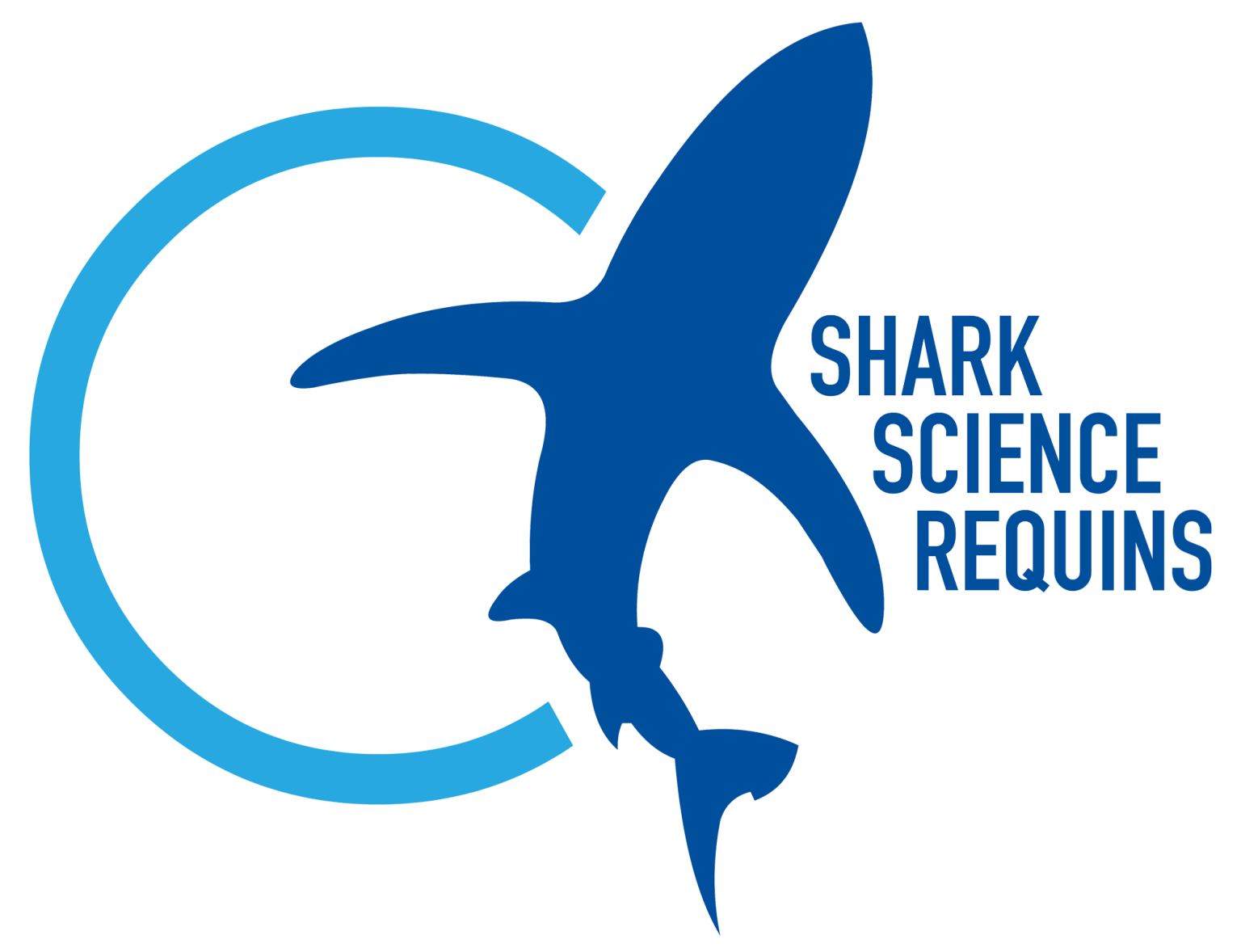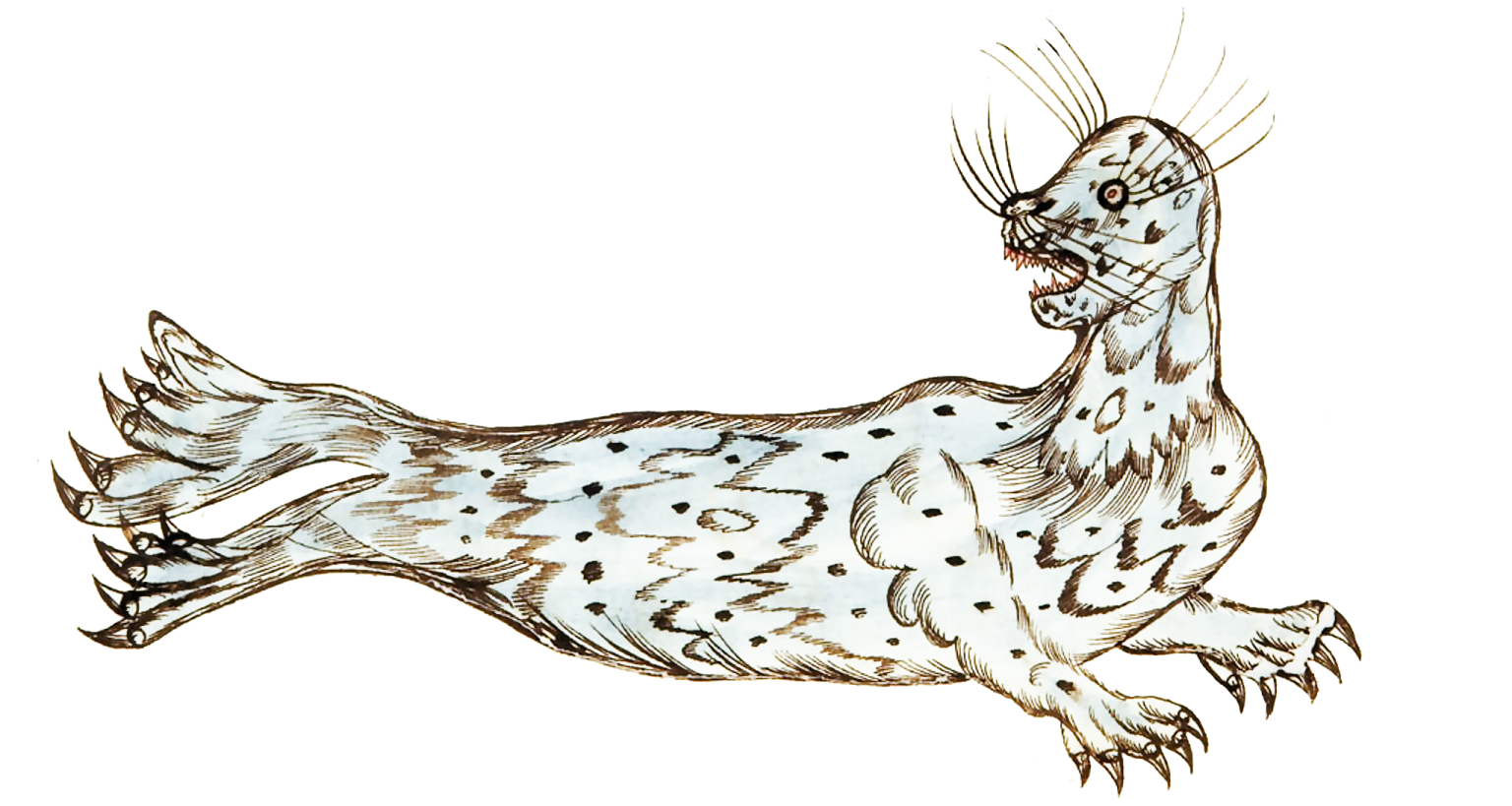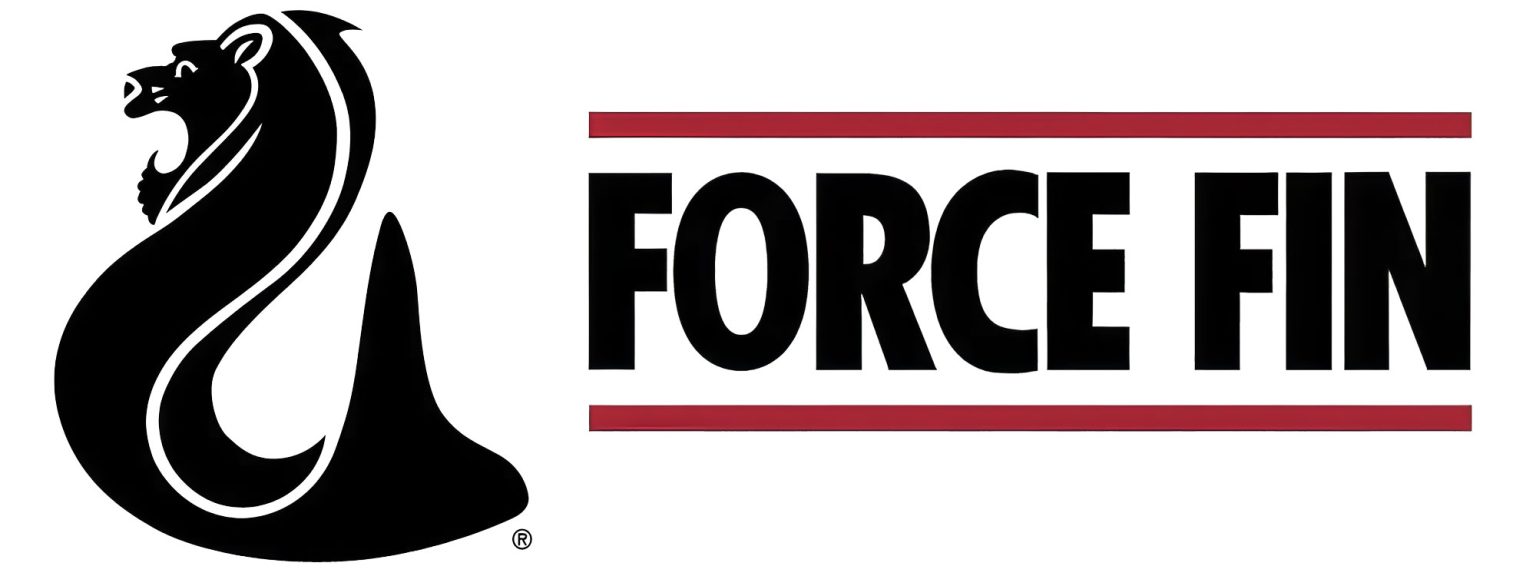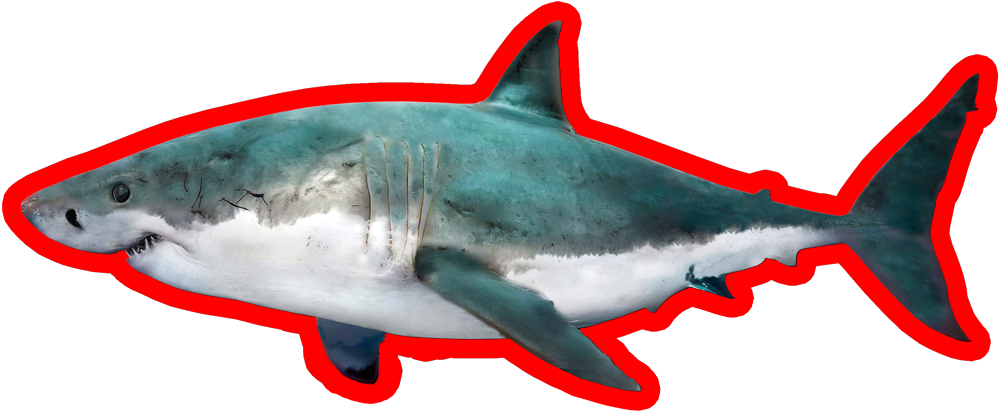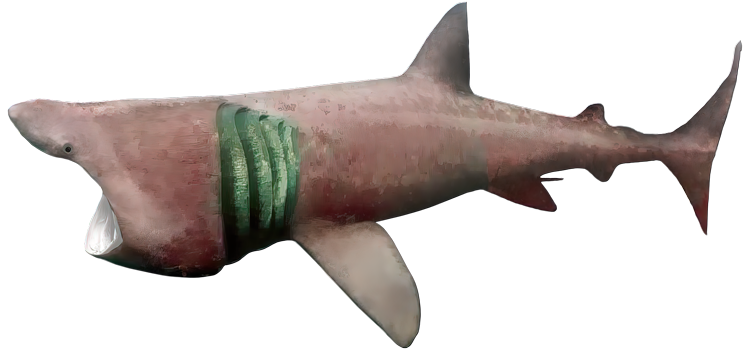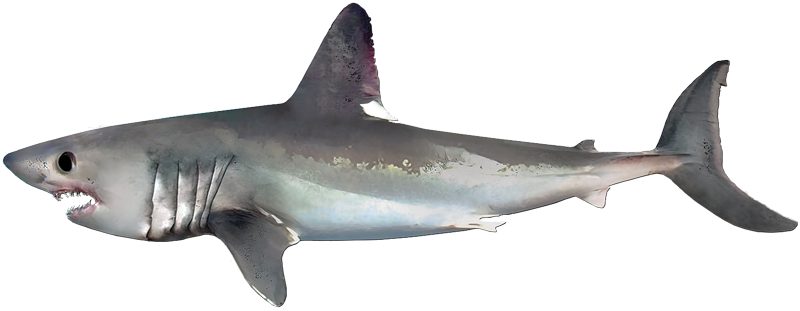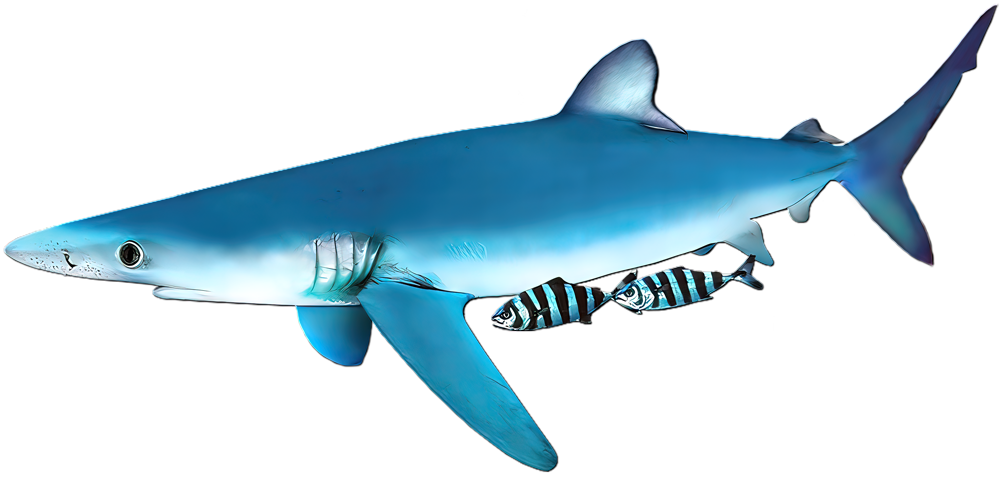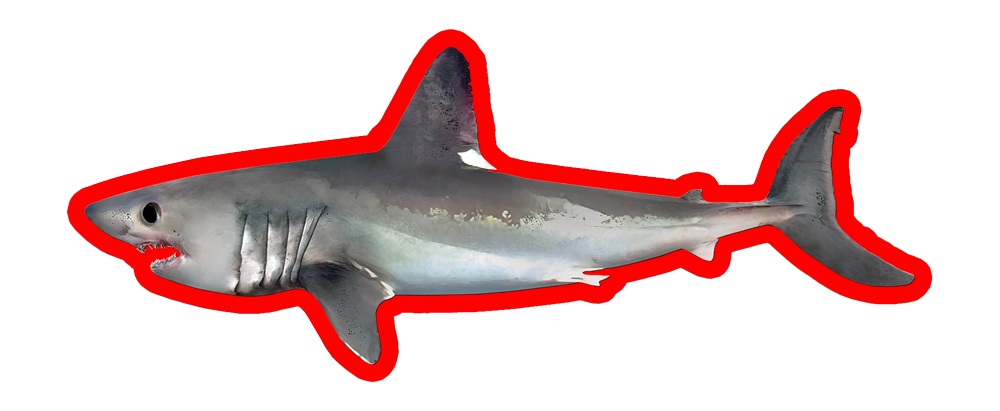IN CANADA


SHARK


WHITE SHARK

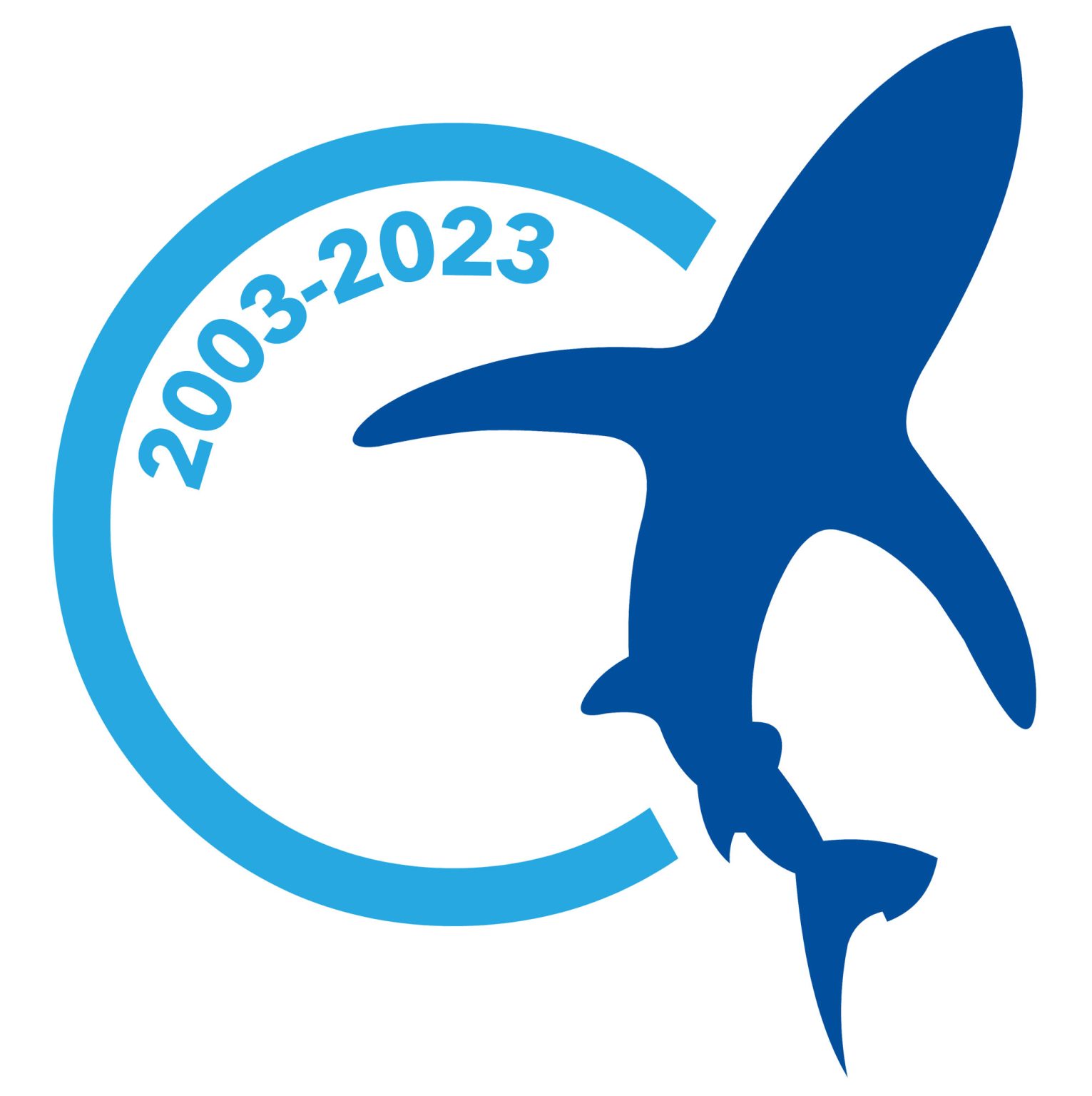
Today, ORS research and conservation activities no longer focus exclusively on the Greenland shark, but also on the many shark, skate and ray species that inhabit the Greater Gulf of St. Lawrence, from the Bay of Fundy to the St. Lawrence Estuary and Saguenay Fjord, as well as the Arctic Ocean.
² Multi-year (2003-2012) non-invasive shark observation conducted without the use of attractants, capturing, or restraints. All encounters initiated and terminated by the sharks.



Today, ORS research and conservation activities no longer focus exclusively on the Greenland shark, but also on the many shark, skate and ray species that inhabit the Greater Gulf of St. Lawrence, from the Bay of Fundy to the St. Lawrence Estuary and Saguenay Fjord, as well as the Arctic Ocean.
² Multi-year (2003-2012) non-invasive shark observation conducted without the use of attractants, capturing, or restraints. All encounters initiated and terminated by the sharks.
2003-2023


(BELOW) Provisional distribution of St. Lawrence shark species in the Gulf, Estuary, and Atlantic Canada, based on research by the St. Lawrence Shark Observatory. Only select cases are posted to illustrate the overall range. This map is updated with new and historical data on an ongoing basis. Map does not include data from the U.S. except borderline cases. To submit additional sightings or captures, please contact us. Click on icons for observation details.
Hundreds of Greenland shark observations by GEERG scientists and sport divers from 2003 to 2009. Up to 12 sharks observed on a single dive. Multiple sharks tagged for telemetry studies by GEERG, Université du Québec à Trois-Rivières, and Acadia University.
Centaines d'observations de requins du Groenland par des scientifiques du GEERG et des plongeurs récréatifs de 2003 à 2009. Jusqu'à 12 requins observés en une seule plongée. Plusieurs requins marqués pour des études de télémétrie par le GEERG, l'Université du Québec à Trois-Rivières et l'Université Acadia.
Ref.: ORS / GEERG
2003-2009 (Multiple)Hundreds of Greenland shark observations by GEERG scientists and sport divers from 2003 to 2009. Up to 12 sharks observed on a single dive. Multiple sharks tagged for telemetry studies by GEERG, Université du Québec à Trois-Rivières, and Acadia University.
Centaines d'observations de requins du Groenland par des scientifiques du GEERG et des plongeurs récréatifs de 2003 à 2009. Jusqu'à 12 requins observés en une seule plongée. Plusieurs requins marqués pour des études de télémétrie par le GEERG, l'Université du Québec à Trois-Rivières et l'Université Acadia.
Ref.: ORS / GEERG
White tooth shark discovered by beachcombers. Tooth inspected and photographed by ORS scientist to confirm identity. Level of abrasion of the serrated edges of such a small tooth leads us to believe that the tooth was potentially shed decades ago.
Dent de requin blanc découverte par des riverains. La dent fut inspectée et photographiée par un scientifique de l'ORS pour confirmer son identité. Le niveau d'abrasion des bords dentelés d'une si petite dent nous porte à croire que la dent aurait été perdue il y a plusieurs décennies.
Ref: ORS
Greenland sharks at Les Escoumins all caught as by-catch by offshore halibut fishery.
Les requins du Groenland aux Escoumins ont tous été capturés accidentellement par la pêche hauturière au flétan.
Ref.: ORS/GEERG
2. 1942/08 (270 cm)
1,2 Requins capturés par des pêcheurs.
Ref.: Vladykov, V. D., and R. A. McAlister. 1961. Preliminary list of marine fishes of Quebec. Le naturaliste canadien, 88(3): 17-113.
White shark brought ashore by fishers.
Requin capturé par des pêcheurs.
Ref.: Vladykov, V. D., and R. A. McAlister. 1961. Preliminary list of marine fishes of Quebec. Le naturaliste canadien, 88(3): 17-113.
White shark reportedly shot by biologist W. B. Scott.
Un requin blanc aurait été abattu par le biologiste W. B. Scott.
Ref.: Vladykov, V. D., and R. A. McAlister. 1961. Preliminary list of marine fishes of Quebec. Le naturaliste canadien, 88(3): 17-113.
Canadian Shark Attack Registry (Case #6)
Type of incident: Attack on boat (No injury) White shark identified from teeth embedded in fishing dory (rowboat) attacked by shark.
Registre canadien des attaques de requins (Cas #6)
Type d'incident : Attaque sur bateau (Pas de blessure) Requin blanc identifié à partir de dents incrustées dans un doris de pêche (chaloupe) attaqué par le requin.
Ref.: Putnam, F. W. 1874. Tooth of a man-eater that attacked a dory near St. Pierre Bank. Bull Essex Inst., Salem, 6(4): 72.
White shark caught by Spanish Trawler Santa Ines.
Requin blanc capturé par le chalutier espagnol Santa Ines.
Ref.: A. Rojo, H. J. Squires, and W. Templeman.
1962/08 (3 spec.
<300 cm)
1962/08 (2 spec.)
The first white shark caught in a hake gill net was examined by W. G. Smith (Fishery Officer). It contained a small porpoise in its stomach. A tooth was examined by L. R. Day and W. B. Scott to confirm the identity of the species. The three next sharks were also caught in the hake gill nets. They were examined by W. G. Smith (Fishery Officer). The fifth and sixth white sharks were observed by the fishermen who landed the other sharks. Both sharks that escaped from the same gill nets were reported to measure over 6 m.
Le premier requin blanc capturé dans un filet maillant de merluche a été examiné par W. G. Smith (agent des pêches). Il contenait un petit marsouin dans son estomac. Une dent a été examinée par L. R. Day et W. B. Scott pour confirmer l'identité de l'espèce. Les trois requins suivants ont été capturés dans les mêmes filets maillants. Ils ont été examinés par W. G. Smith (agent des pêches). Les cinquième et sixième requins blancs ont été observés par les pêcheurs qui ont débarqué les autres requins. Les deux requins qui se sont échappés des mêmes filets maillants mesuraient plus de 6 m.
Ref.: Templeman, W. 1963. Distribution of sharks in the Canadian Atlantic. Bulletin (Fisheries Research Board of Canada), 140: i–vii, 1–77, figs 1–30.
Greenland sharks reportedly observed by recreational scuba divers.
Des requins du Groenland auraient été observés par des plongeurs récréatifs.
Ref.: ORS/GEERG
Greenland shark observed struggling in shallow water. Shark found beached and dead a few hours later. Carcass sent to Bedford Institute of Oceanography (DFO) for necropsy.
Requin du Groenland observé en difficulté en eaux peu profondes. Requin retrouvé échoué et mort quelques heures plus tard. Carcasse envoyée à l'Institut océanographique de Bedford (MPO) pour une autopsie.
Ref.: Valère Doucet | ORS/GEERG
Greenland shark carcass observed on a beach.
Carcasse de requin du Groenland observée sur une plage.
Ref.: ORS | GEERG
White shark observed swimming at the surface.
Requin blanc observé nageant à la surface.
Ref.: Goode, G. Brown. 1884. The food fishes of the United States. Fish. and Fish. Ind. United States (U.S. Comm. Fish.), Sect. 1, Pt. 3, pp. 163-682.
White shark caught in a herring weir. Reported size leads us to believe the shark was a basking shark.
Requin blanc capturé dans une fascine à hareng. La taille signalée nous porte à croire que le requin était un requin pèlerin.
Ref.: Vladykov, V. D., and R. A. McKenzie. 1935. The marine fishes of Nova Scotia. proc. Nova Scotian Inst. Sci., 19(1): 17-113.
Type of incident: Attack on boat (No injury) White shark identified from tooth embedded in boat attacked by shark. Length estimated from size of tooth.
Registre canadien des attaques de requins (Cas #14)
Type d'incident : Attaque sur un bateau (Pas de blessure) Requin blanc identifié à partir d'une dent incrustée dans un bateau attaqué par un requin. Longueur estimée à partir de la taille de la dent.
Ref.: Piers, Harry. 1934. Accidental occurence of the man-eater or great white shark, Cacharodon carcharias (Linn.) in Nova Scotian waters. Proc. Nova Scotian Inst. Sci., 18(3): 192-203.
White shark caught in herring weir. Reported size likely miscalculated.
Requin blanc capturé dans une fascine à hareng. La taille du requin a probablement été mal calculée.
Ref.: Piers, Harry. 1934. Accidental occurence of the man-eater or great white shark, Cacharodon carcharias (Linn.) in Nova Scotian waters. Proc. Nova Scotian Inst. Sci., 18(3): 192-203.
1938/08 (260 cm ♂)
(1953) White shark caught by rod and line by tuna fisher. (1938) White shark caught by rod and line during a sport fishing outing.
(1953) Requin blanc capturé à la canne par un pêcheur de thon. (1938) Requin blanc capturé à la canne lors d'une activité de pêche récréative.
Ref.: (1953) Day, L. R., and H. D. Fisher. 1954. Notes on the great white shark, Carcharodon carcharias, in Canadian Atlantic waters. Copeia for 1954, No. 4, pp. 295-296.
(1938) Anon. 1940. White shark added to Lerner collection. California Acad. Sci., News Letter, No. 6, p. 3.
White shark caught in herring weir.
Requin blanc capturé dans une fascine à hareng.
Ref.: Scattergood, Leslie W., Parker S. Trefethen and Gareth W. Coffin. 1951. Notes on Gulf of Maine fishes in 1949. Copeia for 1951, No. 4, pp. 297-298.
Fully grown porpoise bitten into two pieces by a white shark. Shark was pale grey above and lighter ventrally. The predation was witnessed by a fisherman.
Marsouin adulte mordu en deux par un requin blanc. Le requin était gris pâle sur le dos et plus clair ventralement. La prédation a été observée par un pêcheur.
Ref.: Day, L. R., and H. D. Fisher. 1954. Notes on the great white shark, Carcharodon carcharias, in Canadian Atlantic waters. Copeia for 1954, No. 4, pp. 295-296.
Type of incident: Attack on boat (Fisherman drowned) White shark identified from teeth embedded in fishing dory attacked by shark.
Registre canadien des attaques de requins (Cas #17)
Type d'incident : Attaque sur un bateau (Pêcheur noyé) Requin blanc identifié à partir de dents incrustées dans un doris de pêche attaqué par un requin.
Ref.: Day, L. R., and H. D. Fisher. 1954. Notes on the great white shark, Carcharodon carcharias, in Canadian Atlantic waters. Copeia for 1954, No. 4, pp. 295-296.
White shark caught in a herring weir.
Requin blanc capturé dans une fascine à hareng.
Ref.: Day, L. R., and H. D. Fisher. 1954. Notes on the great white shark, Carcharodon carcharias, in Canadian Atlantic waters. Copeia for 1954, No. 4, pp. 295-296.
Harbour seal with tail and right hind flipper bitten off a few minutes previously, likely by a white shark.
Phoque commun avec la queue et la nageoire postérieure droite sectionnés quelques minutes auparavant, probablement par un requin blanc.
Ref.: Day, L. R., and H. D. Fisher. 1954. Notes on the great white shark, Carcharodon carcharias, in Canadian Atlantic waters. Copeia for 1954, No. 4, pp. 295-296.
1954/09 (487 cm ♀)
(1954/08) White shark caught in herring weir. (1954/09) White shark caught in herring weir.
(1954/08) Requin blanc capturé dans une fascine à hareng. (1954/09) Requin blanc capturé dans une fascine à hareng.
Ref.: Hogans, W.E. and M.J. Dadswell. 1985. Parasitic copepods of the white shark (Carcharodon carcharius L.) from the Bay of Fundy. Canadian Journal of Zoology 63(3):740-741.
White shark observed attacking a porpoise.
Requin blanc observé en train d'attaquer un marsouin.
Ref.: Arnold, P.W. 1972. Predation on harbour porpoise, Phocoena phocoena, by a white shark, Carcharodon carcharias. Journal of the Fisheries Research Board of Canada 29(8):1213-1214
White shark caught in an otter trawl.
Requin blanc capturé dans un chalut à panneaux.
Ref.: Scott, W.B. and M.G. Scott. 1988. Atlantic Fishes of Canada. Canadian Bulletin of Fisheries and Aquatic Sciences 219: 731 p.
White shark caught in herring weir.
Requin blanc capturé dans une fascine à hareng.
Ref.: Hogans, W.E. and M.J. Dadswell. 1985. Parasitic copepods of the white shark (Carcharodon carcharius L.) from the Bay of Fundy. Canadian Journal of Zoology 63(3):740-741.
White shark caught in a herring weir.
Requin blanc capturé dans une fascine à hareng.
Ref.: Scott, W.B. and M.G. Scott. 1988. Atlantic Fishes of Canada. Canadian Bulletin of Fisheries and Aquatic Sciences 219: 731 p.
White shark caught in a cog gillnet.
Requin blanc capturé dans un filet maillant à morue.
Ref.: Scott, W.B. and M.G. Scott. 1988. Atlantic Fishes of Canada. Canadian Bulletin of Fisheries and Aquatic Sciences 219: 731 p.
White shark caught in a gillnet.
Requin blanc capturé dans un filet maillant.
Ref.: Mollomo, P. 1998. The white shark in Maine and Canadian Atlantic waters. Northeastern Naturalist 5(3):207-214.
White shark captured by a Japanese longliner.
Requin blanc capturé par un palangrier japonais.
Ref.: Scotia-Fundy Observer database
Dent récupérée d'une carcasse de phoque.
Ref.: Campana, pers. comm. (2004)
White shark captured by a Japanese longliner.
Requin blanc capturé par un palangrier japonais.
2011/08 (300 cm, 272 kg)
(2018/07) White shark observed by sport fishers stealing striped bass caught on rod and line.
(2011/08) Immature white shark caught alive in fishing weir but later died.
(2018/07) Requin blanc observé par des pêcheurs sportifs en train de voler un bar rayé capturé à la canne et à la ligne.
(2011/08) Requin blanc immature capturé vivant dans une fascine de pêche mais mort plus tard.
Ref.: (2018/07) Atlantic White Shark Conservancy
White shark found dead and partially decomposed on beach.
Requin blanc retrouvé mort et partiellement décomposé sur la plage.
Ref.: Warren Joyce, DFO/BIO
Spiny dogfish swimming at a depth of 30 m on the wreck on the A.W. Perry.
Aiguillat commun nageant à 30 m de profondeur sur l'épave du A.W. Perry.
Observé et photographié par ORS (Jeffrey Gallant).
Scuba divers encounter dozens of spiny dogfish at the surface of Anse de Mont-Saint-Pierre on July 28.
Des douzaines d'aiguillats communs sont rencontrés à la surface de l'anse de Mont-Saint-Pierre par des plongeurs le 28 juillet.
Ref.: ORS
Satellite emitter released from Greenland shark tagged by ORS/GEERG the previous year (October 2012) in Baie-Comeau.
Un émetteur satellite s'est détaché d'un requin du Groenland balisé par l'ORS/GEERG l'année précédente (octobre 2012) à Baie-Comeau.
Ref.: ORS/GEERG
Greenland shark carcass found in James Bay on Cape Hope Island, Nunavut. Shark identified from photo of head and jaws.
Une carcasse de requin du Groenland trouvée dans la baie James sur l'île de Cape Hope, au Nunavut. Requin identifié à partir d'une photo de la tête et des mâchoires.
Ref.: ORS | GEERG
Eight Greenland shark observations reported over a period of two weeks by divers taking part in the Under the Pole expedition.
Huit observations de requins du Groenland rapportées sur une période de deux semaines par des plongeurs participant à l'expédition Under the Pole.
Ref.: Under the Pole
Basking shark caught in herring gill net in Anse de Mont-Louis.
Requin pèlerin capturé dans un filet maillant à hareng dans l'anse de Mont-Louis.
Ref.: Anon. 1962. More than 3 tons of fighting shark entangled in a Bluenose herring gill net. Canadian Fisherman, July, 1962, p. 5 (Advt. Dominion Textile Co.)
Basking shark filmed by passenger aboard a pleasure craft.
Requin pèlerin filmé par un passager à bord d'une embarcation de plaisance.
Ref.: ORS
Spiny dogfish caught under ice at a depth of 12 m by a sport fisher in Baie des Ha! Ha! (Saguenay Fjord)
Un aiguillat commun a été capturé sous la glace à une profondeur de 12 m lors de la pêche blanche sur la baie des Ha! Ha! (fjord du Saguenay)
Ref.: ORS/GEERG/Musée du Fjord
Spiny dogfish caught under ice at a depth of 24 m by a sport fisher in the Saguenay Fjord.
Un aiguillat commun a été capturé sous la glace à une profondeur de 24 m lors de la pêche blanche dans le fjord du Saguenay.
Ref.: ORS/GEERG/Musée du Fjord
Greenland shark caught under ice at the depth of 207 m by a sport fisher. The shark was necropsied by GEERG and the Musée du Fjord in front of a public audience in June 2006.
Requin du Groenland capturé sous la glace à la profondeur de 207 m lors de la pêche blanche. Le requin a été nécropsié par le GEERG et le Musée du Fjord devant un auditoire public en juin 2006.
Ref.: ORS/GEERG/Musée du Fjord
Multiple basking shark observations between Havre-Saint-Pierre and Anticosti Island (Jacques Cartier Strait) by Mingan Island Cetacean Study (MICS) every summer.
Multiples observations du requin pèlerin entre Havre-Saint-Pierre et l'île d'Anticosti par la station de recherche des îles Mingan (MICS) à tous les étés.
Ref.: MICS
Porbeagle shark landed at the fishing dock in La Malbaie
Requin maraîche débarqué au quai de pêche de La Malbaie.
Ref.: Library and Archives Canada/Bibliothèque et Archives Canada
2. 2006/08 (244 cm / 136 kg)
1. Porbeagle shark caught in a herring net one kilometre off the coast.
2. Porbeagle shark caught in a herring net one kilometre off the coast.
1. Requin maraîche capturé dans un filet à hareng à un kilomètre de la côte.
2. Requin maraîche capturé dans un filet à hareng à un kilomètre de la côte.
Ref.: ORS
Porbeagle shark caught off Cawee Islands (îles Caoui).
Requin maraîche capturé au large des îles Caoui.
Ref.: Vladykov (MS, 1958). Private communication Julien Bergeron, Jan. 5, 1962.
2. 2007/08 (200 kg)
1. Porbeagle shark caught in Arctic char net.
2. Porbeagle shark caught in Arctic char net.
1. Requin maraîche capturé dans un filet à omble chevalier.
2. Requin maraîche capturé dans un filet à omble chevalier.
Ref.: ORS
Porbeagle shark caught on a cod line.
Requin maraîche capturé sur une ligne à morue.
Ref.: Schmitt, Joseph. 1904. Monographie de l'île d'Anticosti (Golfe Saint-Laurent). 367 pp. Poissons, pp. 282-287. Paris.
Porbeagle shark observed by Wilfred Templeman in Notre Dame Bay.
Requin maraîche observé par Wilfred Templeman dans la baie de Notre Dame.
Ref.: Templeman, Wilfred. 1963. Distribution of Sharks in the Canadian Atlantic (With Special Reference to Newfoundland Waters). Bull. Fish. Res. Bd. Can., 140: 36-42.
Greenland shark jaw obtained by Horacio Storer.
Mâchoire de requin du Groenland obtenue par Horacio Storer.
Ref.: Storer, Horacio Robinson. 1857. Observations of the fishes of Nova Scotia and Labrador, with descriptions of new species. Boston J. Nat. Hist., 6: 247-270.
Greenland shark reported by J. F. Whiteaves.
Requin du Groenland signalé par J. F. Whiteaves.
Ref.: Whiteaves, J. F. 1886. Catalogue of Canadian pinnipedia, cetacea, fishes and marine invertebrata exhibited by the Department of Fisheries of the Dominion Government. Ottawa, pp. 1-42.
Five or six Greenland sharks, some of them three metres in length, captured in deep water by halibut longline fishermen. Two sharks and the jaws of a third shark examined by William Dawson. One shark of 290 cm examined in detail and the other shark and the jaws of a third shark mounted for the Redpath Museum at McGill University.
Cinq ou six requins du Groenland, certains de trois mètres de long, capturés en eau profonde par les pêcheurs de flétan à la palangre. Deux requins et les mâchoires d'un troisième requin examinés par William Dawson. Un requin de 290 cm a été examiné en détail et l'autre requin et les mâchoires d'un troisième requin ont été montés pour le musée Redpath de l'Université McGill.
Ref.: Dawson, William. 1891. Note on a shark and ray obtained at Little Metis, on the lower St. Lawrence. Canadian Rec. Sci., 4: 303-309.
Greenland shark found stranded with an injury to its head. Shark was reportedly gravid.
Requin du Groenland retrouvé échoué avec une blessure à la tête. Le requin aurait été gravide.
Ref.: Drainville, Gérard, and Léo Brassard. 1960. Le requin, Somniosus microcephalus dans la rivière Saguenay. Le Naturaliste canadien, 87(12): 269-277.
Greenland shark captured in a fishing weir. Shark is killed and used as pig food.
Requin du Groenland capturé dans une fascine. Une fois tué, il sert de nourriture pour des porcs.
Ref.: Drainville, Gérard, and Léo Brassard. 1960. Le requin, Somniosus microcephalus dans la rivière Saguenay. Le Naturaliste canadien, 87(12): 269-277.
Greenland shark reported by Matthew Jones.
Requin du Groenland signalé par Matthew Jones.
Ref.: Jones, Matthew J. 1882. List of the fishes of Nova Scotia. Proc. Trans. Nova Scotian Inst. Nat. Sci. (for 1879), 5(1): 87-97.
Greenland shark reported by William Kendall.
Requin du Groenland signalé par William Kendall.
Ref.: Kendall, William C. 1908. Fauna of New England. List of Pisces. Occasional Papers Boston Soc. Nat. Hist., 7(8): 1-152.
Greenland shark caught in a herring weir.
Requin du Groenland capturé dans une fascine à hareng.
Ref.: Huntsman, A. G. 1922. The fishes of the Bay of Fundy. Contrib. Canadian Biol., 1921, No. 3: 49-72.
Greenland shark caught on a longline.
Requin du Groenland capturé à la palangre.
Ref.: Huntsman, A. G. 1922. The fishes of the Bay of Fundy. Contrib. Canadian Biol., 1921, No. 3: 49-72.
Greenland shark caught in otter trawl. Hundreds of small eggs in ovaries. Largest eggs 1 cm diameter. Bottom temperature: 4.5°C. Stomach contents: Anterior half of body (6.8 kg) of 125 cm porbeagle shark; jaws of (229 cm) blue shark; 16-18 fresh redfish, probably taken while in trawl; one 45-cm fish, probably common hake.
Requin du Groenland capturé dans un chalut à panneaux. Des centaines de petits œufs dans les ovaires. Les plus gros œufs mesuraient 1 cm de diamètre. Température au fond : 4,5 ° C. Contenu de l'estomac : moitié antérieure du corps (6,8 kg) d'un requin-taupe commun de 125 cm; mâchoires de requin bleu (229 cm); 16 à 18 sébastes frais, probablement capturés au chalut; un poisson de 45 cm, probablement une merluche blanche.
Ref.: Templeman, W. 1963. Distribution of sharks in the Canadian Atlantic. Bulletin (Fisheries Research Board of Canada), 140: i–vii, 1–77, figs 1–30.
Greenland shark carcass found on shore.
Carcasse de requin du Groenland trouvée sur le rivage.
Ref.: ORS | GEERG
Greenland shark carcass found under a dock (Quai Monseigneur Blanche).
Carcasse de requin du Groenland trouvée sous le quai Monseigneur Blanche.
Ref.: ORS | GEERG
Greenland shark caught in bottom trawl of fishing vessel Steinunn SF. The carcass was sent to the Bjarnarhöfn Shark Museum.
Requin du Groenland capturé dans le chalut du navire de pêche Steinunn SF. La carcasse a été envoyée au musée des requins de Bjarnarhöfn.
Ref.: Bjarnarhöfn Shark Museum
13 Greenland sharks caught (12 tagged with PSATs) by the University of Copenhagen (Denmark), Indiana University South Bend (USA), the Greenland Institute of Natural Resources (Greenland) and the National Aquarium of Denmark.
13 requins du Groenland capturés (12 marqués avec des PSAT) par l'Université de Copenhague (Danemark), l'Université de l'Indiana à South Bend (États-Unis), l'Institut des ressources naturelles du Groenland (Groenland) et l'Aquarium national du Danemark.
Ref.: Julius Nielsen, University of Copenhagen.
2. 2003/09 (Multiple)
1. An Icelandic fishing captain, known as "the Iceman", wrestled and killed a 300-kg shark to prevent it from attacking his crew, according to witnesses. Captain Sigurdur Petursson was on a beach in Kuummiit, east Greenland, watching his crew processing a catch when he saw the shark swimming towards his men. Date and size uncertain (Oct. 24 is the date of the report).
2. Research cruise aboard R/V Dana from DTU-Aqua (Technical University of Denmark) in Angmagssalik Fjord, Greenland, with 18 scientist from 7 nations 14-23 September 2012.
1. Un capitaine de pêche islandais, connu sous le nom de "l'homme des glaces", a lutté et tué un requin de 300 kg pour l'empêcher d'attaquer son équipage, selon des témoins. Le capitaine Sigurdur Petursson regardait son équipage traiter une prise sur une plage de Kuummiit, dans l'est du Groenland, lorsqu'il a vu le requin nager vers ses hommes. Date et taille incertaines (le 24 octobre est la date du rapport).
2. Croisière de recherche sur le R/V Dana de DTU-Aqua (Université technique du Danemark) dans le fjord d'Angmagssalik, au Groenland, avec 18 scientifiques de 7 pays du 14 au 23 septembre 2012.
Ref.: 1. Media
2.Technical University of Denmark
Multiple Greenland sharks caught on halibut longline.
Plusieurs requins du Groenland capturés à la palangre de flétan.
Ref.: ORS | GEERG
Canadian Shark Attack Registry (Case #16)
Type of incident: Stalking followed by attack (No injury). A Greenland shark reportedly stalked and attacked a boat midway between Trois-Pistoles and Île aux Basques. The warden of the island, Charles Morency, was making his way to the island in a canoe, while carrying the carcass of a dead animal. A blood trail that had formed in the ice-laden water in behind the boat reportedly attracted a 400-cm shark, which followed and then attempted to capsize the canoe on two occasions. M. Morency, who was an experienced fishermen and who had previously seen many sharks in the Gulf of St. Lawrence, identified the assailant as a blue shark. However, it is our determination that only the Greenland shark could have been present at this particular shallow-water and icy location in early April.
Registre canadien des attaques de requins (Cas #16)
Type d'incident : Traque suivie d'une attaque. Un requin du Groenland aurait traqué et attaqué un bateau à mi-chemin entre Trois-Pistoles et l'île aux Basques. Le gardien de l'île, Charles Morency, se dirigeait vers l'île en canot, tout en transportant la carcasse d'un animal mort. Une traînée de sang qui s'était formée dans l'eau chargée de glace à l'arrière du bateau aurait attiré un requin de 400 cm, qui a traqué puis tenté de faire chavirer le canot à deux reprises. M. Morency, qui était un pêcheur expérimenté et qui avait précédemment vu de nombreux requins dans le golfe du Saint-Laurent, a identifié l'agresseur comme un requin bleu. Cependant, nous avons déterminé que seul le requin du Groenland aurait pu être présent à cet endroit particulier en eau peu profonde et glacée au début du mois d'avril.
Ref.: Le Soleil, 11 avril 1940 | ORS | GEERG
Greenland shark carcass found on shore.
Carcasse de requin du Groenland trouvée sur le rivage.
Ref.: ORS | GEERG
Greenland shark carcass found on shore.
Carcasse de requin du Groenland trouvée sur le rivage.
Ref.: ORS | GEERG
Dozens of Greenland shark observations by GEERG scientists and sport divers from 2004 to 2009.
Douzaines d'observations de requins du Groenland par des scientifiques du GEERG et des plongeurs récréatifs de 2004 à 2009.
Ref.: ORS | GEERG
Basking shark tag release. Shark was tagged off the Isle of Man 82 days before release. First documented link between European and American populations and crossing of the North Atlantic Ocean (9 589 km), and also record depth (1,264 m).
Un émetteur satellite s'est détaché d'un requin pèlerin au large de Terre-Neuve-et-Labrador. Le requin a été étiqueté au large de l'île de Man 82 jours avant la libération de l'émetteur. Il s'agit du premier lien documenté entre les populations européennes et américaines, et de traversée de l'Atlantique Nord (9 589 km), ainsi que le record de profondeur (1 264 m).
Ref.: Gore, M. A., Rowat, D., Hall, J., Gell, F. R., & Ormond, R. F. 2008. Transatlantic migration and deep mid-ocean diving by basking shark. Biology letters, 4(4), 395–398.
Porbeagle shark observed during whale-watching tour.
Requin maraîche filmé lors d'une sortie d'observation de baleines.
Ref.: Fundy Tide Runners
Basking shark carcass washed ashore.
Carcasse de requin pèlerin échouée.
Ref.: Réseau québécois d'urgences pour les mammifères marins | ORS
2006/08
Basking sharks observed by boaters.
Requins pèlerins observés par des plaisanciers.
Ref.: ORS
Basking shark observed by boater.
Requin pèlerin observé par un plaisancier.
Ref.: ORS
Requins pèlerins observés à partir de la rive.
Ref.: ORS
Basking shark observed by boater.
Requin pèlerin observé par un plaisancier.
Ref.: ORS
Basking shark feeding at the surface observed by ORS.
Requin pèlerin s'alimentant à la surface observé par l'ORS.
Ref.: ORS
Basking shark carcass observed by ORS.
Carcasse de requin pèlerin observé par l'ORS.
Ref.: ORS
2. 2019/08
Two blue sharks caught accidentally (by-catch) by halibut longline fisher.
Deux requins bleus capturés accidentellement (prises accessoires) par un pêcheur de flétan à la palangre.
Ref.: Pêcheries Desbois | ORS
Porbeagle shark caught accidentally (by-catch) by halibut longline fisher.
Requin maraîche capturé accidentellement (prise accessoire) par un pêcheur de flétan à la palangre.
Ref.: Pêcheries Desbois | ORS
Blue shark carcass found on beach.
Carcasse de requin bleu trouvée sur une plage.
Ref.: ORS
Multiple blue sharks observed during first-ever pelagic shark dives in Canada. Cage dives organised by ORS for filming of Discovery Channel Sharks of the Great White North documentary.
Plusieurs requins bleus observés lors des toutes premières plongées avec requins pélagiques au Canada. Plongées en cage organisées par l'ORS pour le tournage du documentaire Sharks of the Great White North de Discovery Channel.
Ref.: ORS
Canadian Shark Attack Registry (Case #25)
Type of incident: Attack with injury (Unconfirmed). Swimmer reportedly attacked and severely injured by a (probable) white shark. A dorsal fin was spotted at the surface during the incident. If confirmed, this is the first direct attack on a human—in the water and with injury—by a shark in Atlantic Canada and the Gulf of St. Lawrence. Previous incidents involving white sharks in Atlantic Canada were attacks on boats (dories) more than half a century ago.
Registre canadien des attaques de requins (Cas #25)
Type d'incident : Attaque avec blessure (Non confirmé). Une nageuse aurait été attaquée et grièvement blessée par un (probable) requin blanc. Une nageoire dorsale a été observée à la surface lors de l'incident. S'il est confirmé, il s'agit de la première attaque directe contre un humain—dans l'eau et avec blessure—par un requin au Canada atlantique et dans le golfe du Saint-Laurent. Des incidents antérieurs impliquant le requin blanc au Canada atlantique étaient des attaques contre des bateaux (doris) il y a plus d'un demi-siècle.
Ref.: CBC News | ORS
Canadian Shark Attack Registry (Case #4)
Type of incident: Scavenging (Probable). Greenland shark captured with a human leg in its stomach.
Registre canadien des attaques de requins (Cas #4)
Type d'incident : Victime déjà morte (Probable). Requin du Groenland capturé avec une jambe humaine dans le ventre.
Ref.: International Shark Attack File (ISAF)
Canadian Shark Attack Registry (Case #18)
Type of incident: Attack on fishing gear (No injury). Greg Trenholme observed a 4- to 6-m white shark swimming at the surface astern of his boat while fishing for salmon. The shark repeatedly bit one of the fisherman's canvas bags before releasing it and descending out of sight. Analysis of a complete tooth and fragments identified the shark species as Carcharodon carcharias.
Registre canadien des attaques de requins (Case #18)
Type d'incident : Attaque sur engin de pêche (Pas de blessure). En pêchant le saumon, Greg Trenholme a observé un requin blanc de 4 à 6 m nageant à la surface à l'arrière de son bateau. Le requin a mordu à plusieurs reprises l'un des sacs en toile du pêcheur avant de le relâcher et de submerger hors de vue. L'analyse d'une dent complète et de fragments à permis d'identifier le requin comme étant Carcharodon carcharias.
Ref.: R. S. Collier, M. A. Marks, and R. W. Warner. (1996). White shark attacks on inanimate objects along the Pacific coast of North America, in Great White Shark: The Biology of Carcharodon carcharias, A. Klimley and D. G. Ainley, Eds., pp. 217–222, Academic Press, San Diego, Calif, USA.
Canadian Shark Attack Registry (Case #23)
Type of incident: Stalking (No injury). In the spring of 2007, Joeelee Papatsie saw a Greenland shark following his infant grandson along the seashore. The shark may have been initially attracted by blood in the water as seals were being butchered at the site.
Ref.: Idrobo, C., & Berkes, F. (2012). Pangnirtung Inuit and the Greenland Shark: Co-producing Knowledge of a Little Discussed Species. Human Ecology, 40(3), 405-414.
Canadian Shark Attack Registry (Case #20)
Type of incident: Stalking (No injury)A large Greenland shark nearly collided with two GEERG researchers in zero visibility and where the water depth was only 5 m. The shark, which typically swims just over the bottom, swam up the water column directly under the boat, possibly attracted by the sounds produced by the divers as they prepared at the surface. The incident took place just seconds after the unsuspecting divers had entered the water.
Registre canadien des attaques de requins (Cas #20)
Type d'incident : Traque (Pas de blessure). Un requin du Groenland est presque entré en collision avec deux chercheurs du GEERG par visibilité nulle et où la profondeur de l'eau n'était que de 5 m. Le requin, qui nage généralement juste au-dessus du fond, est monté jusqu'à la surface directement sous le bateau, possiblement attiré par les sons produits par les plongeurs alors qu'ils se préparaient. L'incident s'est produit quelques secondes seulement après que les plongeurs sans méfiance soient entrés dans l'eau.
Ref.: GEERG
White shark feeding on a seal carcass filmed by whale-watching boat.
Requin blanc se nourrissant d'une carcasse de phoque filmée par un bateau d'observation des baleines.
Ref.: CBC News | Zodiac Adventures (Ingonish)
Beach closed after lifeguards spot suspected white shark at Basin Head. Lifeguards twice observed a shark fin approximately 100 to 200 metres offshore.
Plage fermée après que les sauveteurs ont repéré un requin blanc présumé à Basin Head. Les sauveteurs ont observé à deux reprises un aileron de requin à environ 100 à 200 mètres au large.
Ref.: CBC News
Common thresher shark reported by scientist (Cox). Report is unconfirmed. May have been an orca (Orcinus orca) misidentified as a common thresher shark.
Requin-renard commun recensé par un chercheur (Cox). L'observation n'est pas confirmée. Il pourrait s'agir d'une orque (Orcinus orca) identifiée à tort comme un requin-renard commun.
Ref.: COX, P. (1896). Catalogue of the marine and freshwater fishes of New Brunswick. Bull. Nat. Hist. Soc. of New Brunswick, 12: 62-75.
Common thresher shark reported by scientist (Knight) as a great enemy to the small whales in the Gulf of St. Lawrence in its attacks causing the whale to spring quite out of water, and make the sea foam from the torment he endures. Report is unconfirmed. May have been an orca (Orcinus orca) misidentified as a common thresher shark.
Le requin-renard commun est décrit par le scientifique (Knight) comme un grand ennemi des petites baleines dans le golfe du Saint-Laurent pour ses attaques faisant jaillir la baleine hors de l'eau, et faire mousser la mer des tourments qu'elle endure. L'observation n'est pas confirmée. Il pourrait s'agir d'une orque (Orcinus orca) identifiée à tort comme un requin-renard commun.
Ref.: Knight, T. F. (1866). Descriptive catalogue of the fishes of Nova Scotia. Halifax, N.S. 34 pp.
Common thresher shark reported by scientist (Knight). In pursuit of shad it is frequently taken of large size, both in Cumberland Bay and Basin of Minas.
Requin-renard commun recensé par un scientifique (Knight). À la poursuite de l'alose, il est fréquemment capturé de grande taille dans la baie de Cumberland et dans le bassin de Minas.
Ref.: Knight, T. F. (1866). Descriptive catalogue of the fishes of Nova Scotia. Halifax, N.S. 34 pp.
Two black dogfish caught 28 km northeast of the Magdalen Islands. The specimens were brought to the marine biology laboratory of Cap-aux-Meules.
Deux aiguillats noirs capturés à 28 km au nord-est des Îles-de-la-Madeleine. Les specimens ont été apportés au laboratoire de biologie marine de Cap-aux-Meules.
Ref.: Bergeron, Julien. 1960. Liste des poissons marins de l'estuaire et du Golfe St. Laurent. Contrib. Dept. Pêches Quebec, No. 80, pp. 1-27.
White shark known as Vimy tracked by satellite at Brion Island.
Requin blanc connu sous le nom de Vimy suivi par satellite à l'île Brion.
Ref.: Ocearch
Two basking sharks observed swimming by Jacques-Yves Cousteau's Calypso.
Deux requins pèlerins observés nageant près de la Calypso de Jacques-Yves Cousteau.
Ref.: Cousteau, Jacques-Yves, and Paccalet, Yves. (1985). Du grand large aux Grands Lacs. Flammarion. 252 pages.
Basking shark carcass found along shore.
Carcasse de requin pèlerin trouvée sur la rive.
Ref.: Pierre Blais (with/avec photos), ORS
Canadian Shark Attack Registry (Case #19)
Type of incident: Attack or investigative incident. A porbeagle shark bites into and tries to make off with a bag full of sea urchins collected by fisherman (Daniel MacDonald) on scuba gear. The diver has to repel the shark by hitting it on its snout with the bag until he makes it back to shore. The encounter, which starts at a depth of 16 m lasts approximately 15 minutes.
Registre canadien des attaques de requins (Cas #19)
Type d'incident : Attaque ou investigation. Un requin maraîche mord et essaie de s'enfuir avec un sac plein d'oursins ramassés par un pêcheur (Daniel MacDonald) en équipement de plongée. Le plongeur doit repousser le requin en le frappant sur le museau avec le sac jusqu'à ce qu'il regagne le rivage. La rencontre, qui débute à une profondeur de 16 m, dure environ 15 minutes.
Ref.: Daniel MacDonald | ORS
Canadian Shark Attack Registry (Case #21)
Type of incident: Attack or investigative. A porbeagle shark circles then collides with a scuba diver (Scott MacNichol) filming the sea floor under empty salmon pens at a depth of 8 m. The diver has to fend off the shark by hitting it with his camera. The shark follows him to the surface where it swims under the boat for several minutes after the diver has exited the water.
Registre canadien des attaques de requins (Cas #21)
Type d'incident : Attaque ou investigation. Un requin maraîche encercle puis entre en collision avec un plongeur (Scott MacNichol) qui filme le fond marin sous des enclos à saumon vides à une profondeur de 8 m. Le plongeur doit repousser le requin en le frappant avec sa caméra. Le requin le suit jusqu'à la surface où il nage sous le bateau pendant plusieurs minutes après que le plongeur soit sorti de l'eau.
Ref.: Bangor Daily News
Canadian Shark Attack registry (Case #22)
Type of incident: Attack or investigative (Unconfirmed). Surfer claims a salmon shark bit off part of her finger while surfing but the incident remains unconfirmed. Scientists are sceptical since there are no known cases of a salmon shark (fish eater) ever attacking a human, let alone off the coast of Vancouver Island where the species is rare.
Type d'incident : Attaque ou investigation (non-confirmé). Une surfeuse affirme qu'un requin saumon a mordu une partie de son doigt, mais l'incident n'a pas été confirmé. Les scientifiques sont sceptiques car il n'y a aucun cas connu d'un requin saumon (piscivore) attaquant un humain, encore moins au large de la côte de l'île de Vancouver où l'espèce est rare.
Ref.: CBC News
Canadian Shark Attack Registry (Case #13)
Type of incident: Attack or investigative (Unconfirmed). A commercial hardhat diver claims to have been attacked three times by a shark (species unknown) during underwater construction work on the Second Narrows Bridge. The diver (John Bruce) reported kills the shark from repeated blows with an iron bar at a depth of 27 m. The shark is then exhibited in public before being destroyed.
Ref.: The Vancouver Sun (08/01/1925)
Canadian Shark Attack Registry (Case #10)
Type of incident: Stalking. A shark (species unknown) reportedly stalks then rushes towards a wading boy (Harry Menzies) who runs for safety. The shark beaches itself in the process and is then killed by a Mr. Dusenberry who later exhibits the shark inside a tent for a 10¢ entrance fee. Shark is described as a "genuine man-eating Hawaiian variety."
Registre canadien des attaques de requins (Cas #10)
Type d'incident : Traque. Un requin (espèce inconnue) traque puis se précipite vers un garçon (Harry Menzies) qui s'échappe de l'eau en courant. Le requin s'échoue dans le processus et est ensuite tué par un M. Dusenberry qui expose plus tard le requin à l'intérieur d'une tente pour un droit d'entrée de 10¢. Le requin est décrit comme une « variété hawaïenne mangeuse d'hommes ».
Ref.: Daily World (07/07/1905)
Canadian Shark Attack Registry (Case #11)
Type of incident: Attack on boat (Provoked). A white shark attacks and tips a fishing boat after being harpooned at Slaunwhite's Ledge. One of the two occupants of the boat is flung overboard. The shark species is identified from a tooth found embedded in the boat.
Registre canadien des attaques de requins (Cas #11)
Type d'incident : Attaque sur bateau (Provoquée). Un requin blanc attaque et fait tanguer un bateau de pêche après avoir été harponné à Slaunwhite's Ledge. L'un des deux occupants du bateau est jeté par-dessus bord. L'espèce de requin est identifiée à partir d'une dent trouvée incrustée dans le bateau.
Ref.: Piers, H. (1934). Accidental occurrence of the man-eater or great white shark, Carcharodon carcharias (Linn.) in Nova Scotian waters. Proceedings of the Nova Scotian Institute of Science 18(3):192-203.
Canadian Shark Attack Registry (Case #9)
Type of incident: Attack (Unconfirmed). A fisherman (John Roult) is reportedly attacked and killed by a shark after falling overboard from the French (Saint-Pierre) schooner Société. Exact date and location unknown.
Registre canadien des attaques de requins (Cas #9)
Type d'incident : Attaque (Non confirmée). Un pêcheur (John Roult) aurait été attaqué et tué par un requin après être tombé par dessus bord de la goélette française (Saint-Pierre) Société. Date exacte et lieu inconnus.
Ref.: Washington Post (31/08/1891)
Canadian Shark Attack Registry (Case #7)
Type of incident: Attack (Provoked). A passenger screams that he has been bitten by a shark after his ship, the Geiser sinks from a collision with another vessel, the Thingvalla. Victim is presumed dead along with many other passengers that perish from drowning.
Registre canadien des attaques de requins (Cas #7)
Type d'incident : Attaque (Provoquée). Un passager crie qu'il a été mordu par un requin après que son navire, le Geiser, sombre suite à une collision avec un autre navire, le Thingvalla. La victime est présumée morte avec de nombreux autres passagers qui périssent par noyade.
Ref.: Aurora Daily Express (18/08/1888)
Canadian Shark Attack Registry (Case #5)
Type of incident: Attack (Provoked). Two fisherman are reportedly killed by sharks after their schooner is run down by a steamer in a dense fog, near Cape Canso. The crew initially hangs on to the waterlogged vessel for two days after which seven are washed overboard. The remaining nine crew board a lifeboat, which capsizes, and two of the men are "devoured" by sharks. The remaining seven recover the boat. Two die of exhaustion before the survivors are rescued by a passing vessel.
Registre canadien des attaques de requins (Cas #5)
Type d'incident : Attaque (Provoquée). Deux pêcheurs auraient été tués par des requins après que leur goélette ait été percuté par un bateau à vapeur dans le brouillard, près du cap Canso. L'équipage s'accroche d'abord au navire gorgé d'eau pendant deux jours, après quoi sept sont tombés par-dessus bord. Les neuf autres membres d'équipage montent à bord d'un canot de sauvetage, qui chavire, et deux des hommes sont « dévorés » par des requins. Les sept autres récupèrent le bateau. Deux meurent d'épuisement avant que les survivants ne soient secourus par un navire passant.
Ref.: The Daily Dispatch (01/11/1860)
Canadian Shark Attack Registry (Case #3)
Type of incident: Attack (Discredited). R.M. Ballantyne (1846) describes a shark attack on an Innu family traveling in a canoe, which results in the death of a child. It is the opinion of ORS that the story is a fabrication. It is listed here to discredit the incident which may be presented as fact elsewhere.
Registre canadien des attaques de requins (Cas #3)
Type d'incident : Attaque (Discrédité). R.M. Ballantyne (1846) décrit une attaque de requin contre une famille innue voyageant en canot, qui a entraîné la mort d'un enfant. C'est l'opinion de l'ORS que l'histoire est une fabrication. Elle est présentée ici pour discréditer l'incident qui peut être présenté ailleurs comme un fait.
Ref.: Ballantyne, R. M. (1876). Hudson Bay, or Everyday Life in the Wilds of North America : During Six Years' Residence in the Territories of the Hon. Hudson Bay Company. London: T. Nelson.
Canadian Shark Attack Registry (Case #1)
Type of incident: Attack (Unconfirmed)
Chrestien Leclercq (1691) describes a fatal shark attack on an swimmer after listing his personal survey of animals—including sharks and skates—of the Gaspé Peninsula. The text does not specify the time or place of the attack, which suggests that it could have occurred elsewhere than in the Gaspé.
Registre canadien des attaques de requins (Cas # 1)
Type d'incident : Attaque (Non confirmé)
Chrestien Leclercq (1691) décrit une attaque mortelle de requin sur un nageur après avoir énuméré son relevé personnel d'animaux—dont des requins et des raies—de la péninsule gaspésienne. Le texte n'identifie pas le moment ni le lieu de l'attaque, ce qui laisse présager qu'il pourrait s'être produit ailleurs qu'en Gaspésie.
Ref.: Le Clercq, Chrestien. (1691). Nouvelle relation de la Gaspésie
Canadian Shark Attack Registry (Case #12)
Type of incident: Unconfirmed. Fisherman (Joe Folsom) reportedly bitten on the hand by a shark [or something] while tending lines from the schooner Cape Ann at the extreme western edge of the Grand Banks.
Registre canadien des attaques de requins (Cas #12)
Type d'incident : Non confirmé. Un pêcheur (Joe Folsom) aurait été mordu à la main par un requin [ou autre chose] alors qu'il s'occupait des lignes de pêche de la goélette Cape Ann à l'extrémité ouest des Grands Bancs.
Ref.: Charles Edward Russell. (1929). From Sandy Hook to 62°. Sandy Hook Pilots Association. Pages 310-311.
Basking shark filmed by recreational boater off Bonaventure.
Requin pèlerin filmé par un plaisancier au large de Bonaventure.
Ref.: Felix Eloi Henry | ORS
Basking shark filmed from shore at Sandbanks Provincial Park.
Requin pèlerin filmé depuis le rivage du parc provincial Sandbanks.
Ref.: ORS
A diver photographing sea life on a vertical wall reports turning on his side where he sees a Greenland shark swimming away from him for approximately five seconds. He recognises the shark's profile and fins, including the caudal fin (tail), but does not see the head. The depth of the observation was approximately 20 metres. Horizontal visibility was approximately 6 metres.
Un plongeur photographiant des invertébrés fixés à une paroi verticale rapporte s'être retourné sur le côté où il aperçoit un requin du Groenland s'éloigner de lui pendant environ cinq secondes. Il reconnaît le profil ainsi que les nageoires, y compris la nageoire caudale (queue), du requin mais ne voit pas la tête. La profondeur de l'observation était d'environ 20 mètres. La visibilité horizontale était d'environ 6 mètres.
Ref.: Aleksandr Greendaizer | ORS | GEERG
Greenland shark brought ashore at the Pilots' wharf after being caught accidentally by the halibut longline fishery.
Requin du Groenland ramené à terre au quai des Pilotes après avoir été capturé accidentellement par la pêche au flétan à la palangre.
Ref.: ORS | GEERG
Greenland shark carcass found washed ashore.
Une carcasse de requin du Groenland retrouvée échouée sur le rivage.
Ref.: Paul Boissinot | ORS | GEERG
Greenland shark captured on Batture aux Alouettes by Gabriel Bouliane and two associates during beluga hunt.
Requin du Groenland capturé sur la batture aux Alouettes par Gabriel Bouliane et deux associés lors d'une chasse au béluga.
Ref.: Le Quotidien, 12 juillet 1886 | ORS | GEERG
A basking shark accidentally caught in a fishing net is shot to death by fishermen to avoid damaging gear. The shark is subsequently buried on the beach. Fishermen note that this is not the first basking shark caught in this manner in Petit-Matane.
Un requin pèlerin pris accidentellement dans un filet de pêche est abattu par des pêcheurs pour éviter qu'il endommage les engins. Le requin est ensuite enfoui sur la plage. Les pêcheurs notent qu'il ne s'agit pas du premier requin pèlerin capturé de cette manière à Petit-Matane.
Ref.: Le Soleil, 4 septembre 1975 | ORS
Registre canadien des attaques de requins (Cas #8)
Type d'incident : Traque (Non confirmé). Une femme qui cherche du bois de chauffage sur la plage aurait rencontré un requin du Groenland de quatre mètres échoué sur le rivage à marée basse. Elle tue le requin avec une gaffe.
Ref.: Le Progrès du Saguenay, 27 septembre, 1888.
Greenland shark carcass found on shore. Shark is preserved by the nearby Musée du Fjord.
Une carcasse de requin du Groenland est retrouvée sur le rivage. Le requin est conservé par le Musée du Fjord.
Ref.: Musée du Fjord
Greenland shark captured by ice fisher. Shark is donated to a local high school.
Requin du Groenland capturé sous la glace par un pêcheur qui en fait don à la polyvalente de La Baie.
Ref.: DFO/MPO IML
Greenland shark reported in Baie des Ha! Ha! Condition unknown.
Requin du Groenland signalé dans la Baie des Ha ! Ha! État inconnu.
Ref.: DFO/MPO IML
Three Greenland sharks captured under ice by sport fishers. Two other sharks reportedly captured the preceding week.
Trois requins du Groenland capturés sous la glace lors de la pêche blanche. Deux autres requins auraient été capturés la semaine précédente.
Ref.: Le Soleil, 31 janvier 1983
Greenland shark killed with shotgun.
Requin du Groenland tué à la carabine.
Ref.: DFO/MPO IML
One of five Greenland sharks captured by ice fishers near the dock in Anse-Saint-Jean. Shark preserved by Dr. Joey Torresan.
Un de cinq requins du Groenland capturés par des pêcheurs sur glace (pêche blanche) près du quai de l'Anse-Saint-Jean. Le requin est naturalisé par le Dr Joey Torresan.
Ref.: Le quotidien du Saguenay - Lac-St-Jean, 6 mars 1978
Three Greenland sharks captured by ice fishers over a period of three days. The first two sharks are donated to the musée de la Nature in Sainte-Rose-du-Nord. The same news story tells of another Greenland shark discovered ashore in Sainte-Rose-du-Nord 30 years earlier.
Trois requins du Groenland capturés par des pêcheurs sur glace (pêche blanche) sur une période de trois jours. Les deux premiers requins sont offerts au musée de la Nature de Sainte-Rose-du-Nord. La même manchette raconte l'histoire d'un autre requin du Groenland découvert échoué à Sainte-Rose-du-Nord 30 ans plus tôt.
Ref.: Le quotidien du Saguenay - Lac-St-Jean, 19 janvier 1978
Greenland shark found stranded with an injury to its abdomen.
Un requin du Groenland retrouvé échoué avec une blessure à l'abdomen.
Ref.: DFO/MPO IML
Spiny dogfish caught on cod long line.
Aiguillat commun pêché à la palangre de morue.
Ref.: DFO/MPO IML
Two spiny dogfish caught on cod and halibut longline.
Deux aiguillats communs pêchés à la palangre à morue et au flétan.
Ref.: DFO/MPO IML
Greenland shark caught by lumpfish fisher.
Requin du Groenland capturé par un pêcheur de poule de mer.
Ref.: DFO/MPO IML
Greenland shark carcass found stranded ashore.
Carcasse de requin du Groenland échouée sur la grève.
Ref.: DFO/MPO IML
Porbeagle shark reported (Unknown circumstances).
Requin maraîche signalé (Circonstances inconnues).
Ref.: DFO/MPO IML
Porbeagle shark reported at Grindstone Island (Unknown circumstances).
Requin maraîche signalé à Grindstone (Île du Cap aux Meules) (Circonstances inconnues).
Ref.: DFO/MPO IML
Four Greenland sharks captured in a halibut net off Gros Morne.
Quatre requins du Groenland capturés dans un filet à flétan au large de Gros Morne.
Ref.: DFO/MPO IML
Greenland shark reported one kilometre off Rimouski (Circumstances unknown).
Requin du Groenland signalé à un kilomètre au large de Rimouski (Circonstances inconnues).
Ref.: DFO/MPO IML
Porbeagle shark caught in a net.
Requin maraîche capturé dans un filet.
Ref.: DFO/MPO IML
Porbeagle shark caught in a cod net.
Requin maraîche capturé dans un filet à morue.
Ref.: DFO/MPO IML
Basking shark carcass found ashore.
Carcasse de requin pèlerin échouée.
Ref.: DFO/MPO IML
Basking shark caught in a herring net.
Requin pèlerin capturé dans un filet à hareng.
Ref.: DFO/MPO IML
Basking shark observed swimming at the surface by DFO.
Requin pèlerin nageant à la surface observé par le MPO.
Ref.: DFO/MPO IML
Greenland shark reported off Sainte-Flavie (Unknown circumstances).
Requin du Groenland signalé au large de Sainte-Flavie (Circonstances inconnues).
Ref.: DFO/MPO IML
Greenland shark caught in a halibut gillnet off Forestville.
Requin du Groenland capturé dans un filet maillant à turbot au large de Forestville.
Ref.: DFO/MPO IML
Basking shark filmed by a tour boat near Bonaventure Island.
Requin pèlerin filmé par un croisiériste près de l'île Bonaventure.
Ref.: Les Bateaux de croisières Julien Cloutier
Canadian Shark Attack Registry (Case #27)
Type of incident: Stalking (No injury). Two divers exploring the wreck of the Letitia were approached three times by a juvenile white shark. The first encounter took place at the depth of 33 m, while the second and third encounters occurred during ascent.
Registre canadien des attaques de requins (Cas #27)
Type d'incident : Traque (Pas de blessure). Deux plongeurs explorant l'épave du Letitia ont été approchés à trois reprises par un jeune requin blanc. La première rencontre a eu lieu à la profondeur de 33 m, tandis que les deuxième et troisième rencontres ont eu lieu lors de la remontée.
Ref.: ORS (Interview with diver/Entrevue avec plongeur)
Canadian Shark Attack Registry (Case #15)
Type of incident: Attack on boat — Defensive (D)
Three fishermen from the schooner Raymonde have to fend off a six-metre shark, likely a white or mako, after it lands across their dory. Albion Muise, Peter Dousette and Jack Shannon had been fishing for cod when a shark swallowed a fish and was caught on the same hook. The shark then leaped out of the water and landed on the small dory. The shark reportedly continued to harass the boat for 15 minutes after being removed—or removing itself—from its precarious position. It is not known if the shark actually attacked the boat, i.e. rammed or bit the dory.
Registre canadien des attaques de requins (Cas #15)
Type d'incident : Attaque sur bateau — Défensive (D). Trois pêcheurs de la goélette Raymonde doivent repousser un requin de six mètres, probablement un requin blanc ou un requin-taupe bleu, après qu'il ait atterri sur leur doris. Albion Muise, Peter Dousette et Jack Shannon pêchaient la morue lorsqu'un requin a avalé un poisson et a été pris sur le même hameçon. Le requin a alors sauté hors de l'eau et a atterri sur le petit doris. Le requin aurait continué à harceler le bateau pendant 15 minutes après avoir été retiré—ou s'être retiré lui-même—de sa position précaire. On ne sait pas si le requin a réellement attaqué le bateau, c'est-à-dire qu'il a percuté ou mordu le doris.
Ref.: 20-Foot Shark Attacks Dory. New York Times. 13.08.1936
Basking shark filmed by a tour boat near Bonaventure Island.
Requin pèlerin filmé par un croisiériste près de l'île Bonaventure.
Ref.: Les Bateaux de croisières Julien Cloutier
White shark known as Vimy tracked by satellite at Brion Island.
Requin blanc connu sous le nom de Vimy suivi par satellite à l'île Brion.
Ref.: Ocearch
White shark known as Breton tracked by satellite off the Magdalen Islands.
Requin blanc connu sous le nom de Breton suivi par satellite aux Îles de la Madeleine.
Ref.: Ocearch
White shark known as Monomoy tracked by satellite at Brion Island.
Requin blanc connu sous le nom de Monomoy suivi par satellite à l'île Brion.
Ref.: Ocearch
White shark known as Brunswick tracked by satellite in the Bay of Chaleur.
Requin blanc connu sous le nom de Brunswick suivi par satellite dans la baie des Chaleurs
Ref.: Ocearch
Date inconnue (1995+)
Portuguese dogfish (Centroscymnus coelolepis) caught as by-catch on the Gulf of St. Lawrence in July 2023.
Pailona commun (Centroscymnus coelolepis) pris accessoirement dans le golfe du Saint-Laurent en juillet 2023.
Ref.: Stephan Bakir | ORS










































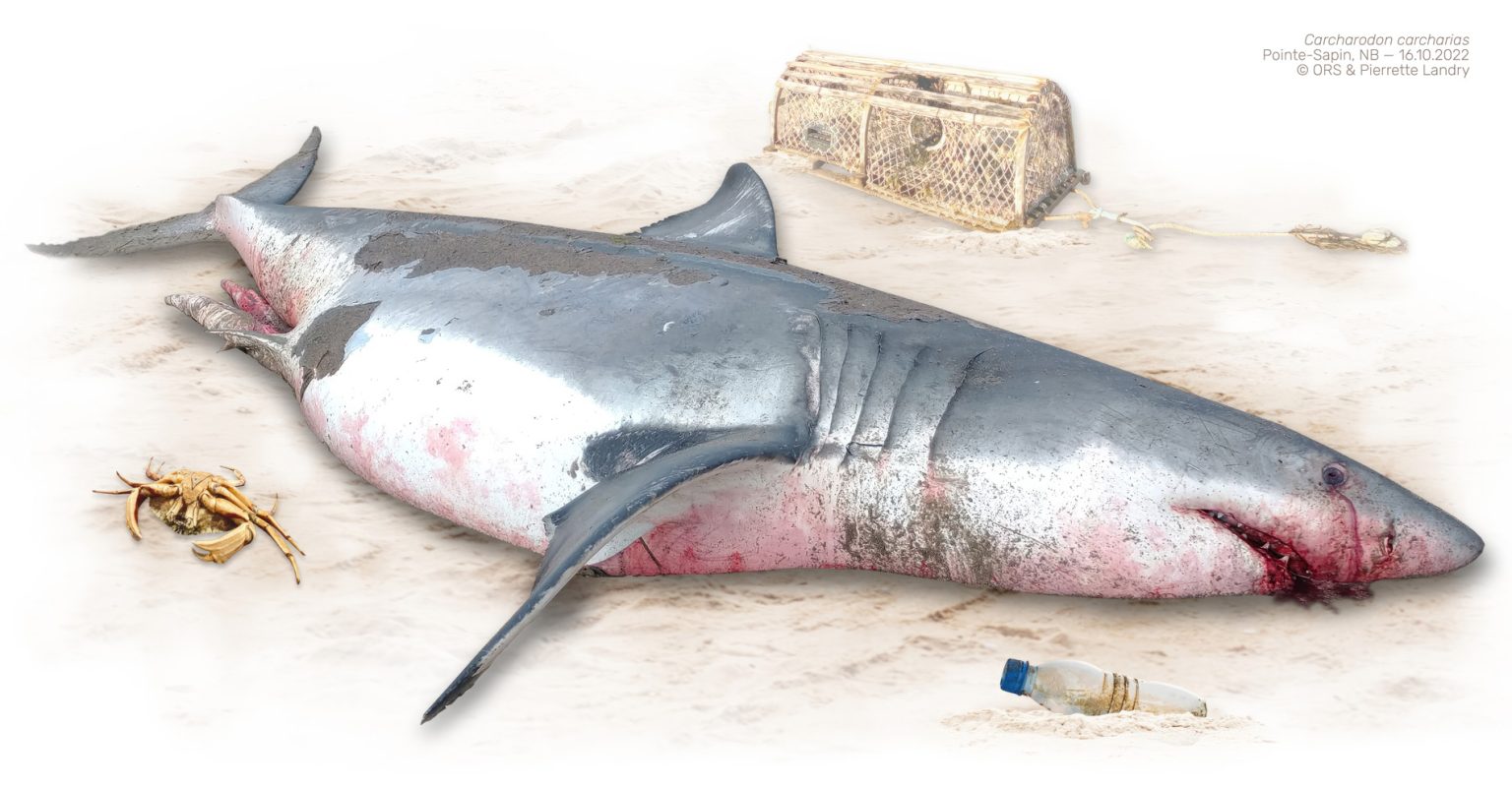
CRA #834462913RR0001


CRA #834462913RR0001



